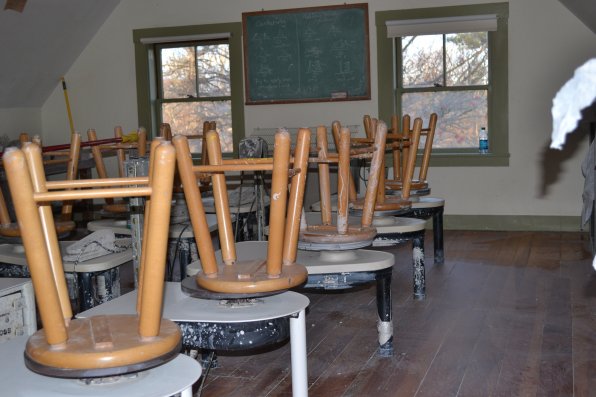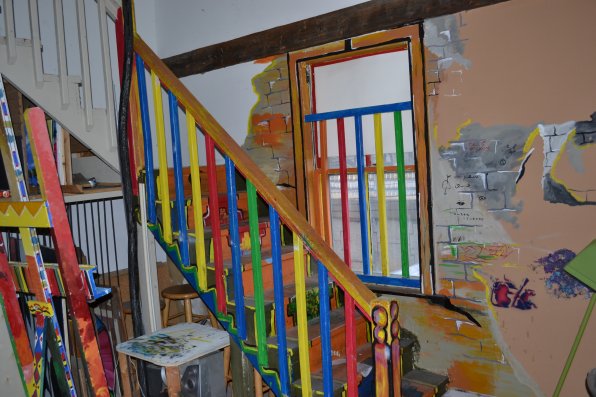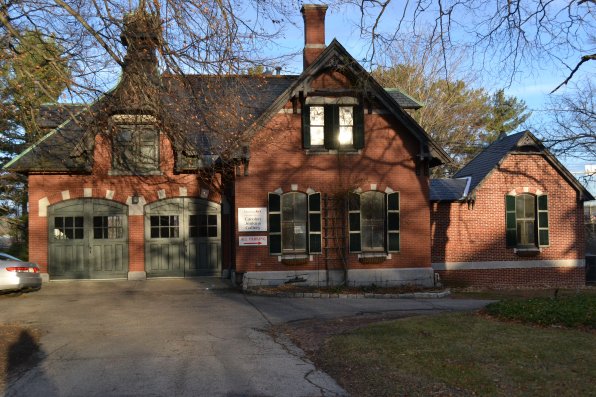Carolyn Jenkins had a vision for her family’s downtown Concord estate.
Having spent much of her life engulfed in one area of the art world or another, Jenkins wanted her family’s legacy to provide an avenue for others to pursue the arts. It’s why she left the estate to a nonprofit trust with specific instructions to be used for cultural and educational purposes, including the enrichment of the arts. And would she ever be pleased to know how things have turned out.
“She was the last of the family,” said Kimball-Jenkins Executive Director Ryan Linehan. “She had no living relatives to leave it to.”
After the estate was held up in court for the better part of a decade following Jenkins’s untimely death at the age of 50 in 1980, and a short time as a house museum, the Kimball-Jenkins School of Art & Estate opened in 1999 and continues to this day to provide a place for both inexperienced and seasoned artists to learn and grow.
“Her biggest thing was for it to be left for the community,” said Linehan. “And it’s really unique and irreplaceable.”
The yellow house, located on the right side of the driveway closest to Main Street, was constructed in 1790 and is the oldest building on the property. If those walls could talk, imagine the stories they would tell.
The mansion, the idea of Samuel “Sparhawk” Kimball, was a three-year project started in 1875. Following its completion, Kimball immediately turned his attention to adding a carriage house. So for the better part of five years, construction crews dominated the estate’s landscape, but the end result was a property fit to house one of the best names ever.
While the mansion was a private family residence for more than 100 years, a lot has changed since the opening of the art school. The original Victorian details, such as the marble fireplaces and hand painted art on the ceilings, still remain, but the scope of the building is more conducive to a school. There are private studios for local writers and artists, as well as a home for the Jill C. Wilson Gallery and the school’s office.
“We have seven different artists that work here full time,” said Linehan. “It’s a great space and nobody wants to give it up so you have to wait until someone moves out.”
The carriage house now houses the watercolor studio, along with the Carolyn Jenkins Gallery, and the lone remaining residence on the property – an apartment.
“It’s the best apartment in Concord,” said Linehan.
Both of the galleries show a different artist for up to two months, and Linehan tries to work with artists outside of the area.
“It really allows me to bring the art world to Concord,” said Linehan.
The smaller of the two yellow houses is home to the ceramics studios and the older one also houses private work studios as well as classrooms for some of the courses offered by the school.
“Most of the time, they’re 8-to-10 week classes,” said Linehan. “And most classes have 8 to 10 students. It’s a lot of one on one instruction.”
Beginning in January, the school will begin its first term of 2014 with a series of new classes, ranging from watercolor to woodworking. One of the more popular classes has been Colors & Cabernet, added this summer – a one-night class where you can receive instruction from a professional artist to create a masterpiece. And the best part is that you can bring your own beer or wine. Want to know just how cool it is? Just ask Keith (who tried his hand at painting the Green Martini).
Kimball-Jenkins also has a summer camp for children and a variety of intensive workshops. The property is available for weddings and private parties, as the flat yard behind the mansion is able to hold a gathering for up to 300 people. And if that’s a little too big for you, there is always the playhouse built for Jenkins by her father, where you might be able to host a group function for 10 to 15 people of small to average size. (But unfortunately, it is not actually for rent.)
The major hurdle for Linehan is generating enough money to fund the estate. Only about half of the operating budget comes from the fees associated with the school’s classes and the rent taken in from the studios. The rest of it is collected through fundraising efforts, with a total of $150,000 needed each year to keep the school open. That’s what happens when all the buildings on the property are at least 100 years old and in need of major repairs in order to keep the history preserved.
“It’s a very expensive property to maintain,” said Linehan. “As we can afford stuff, we do it. We have a long-term plan to keep up with the maintenance.”
This fall’s Paint the Town Art Auction brought in close to $40,000. With the money collected from the auction being split evenly between the school and the artists, Linehan has been lucky to work with some of the best New Hampshire has to offer.
“I always push to support local artists,” said Linehan. “And it works for us and works for them and I find we get better art work.”
Yet that is only a small portion of what is needed, and as of last week, Linehan still had another $80,000 to raise by the end of the year. He’s primarily doing it through the estate’s Annual Fund.
But luckily for Linehan, the estate got a little boost from the New Hampshire Preservation Alliance. In October, Kimball-Jenkins was named to the alliance’s Seven to Save list, as one of the State of New Hampshire’s most valuable historic and cultural resources
.
“It brings a certain level of attention to the property,” said Linehan.
Now it’s up to the people of Concord to continue to show their support. “We can only exist here if the Concord community wants us here,” said Linehan.
So take a class, write a check or get married, because it will all help keep Kimball-Jenkins around for another couple hundred years.
























